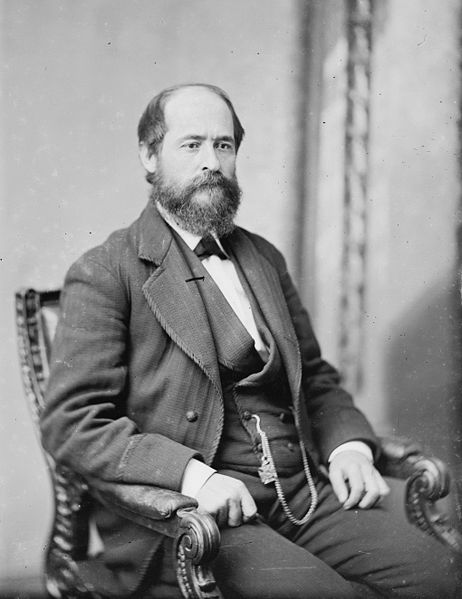The Bland–Allison Act, also referred to as the Grand Bland Plan of 1878, was an act of the United States Congress requiring the U.S. Treasury to buy a certain amount of silver and put it into circulation as silver dollars. Though the bill was vetoed by President Rutherford B. Hayes, the Congress overrode Hayes's veto on February 28, 1878, to enact the law. The text of the act can be found in the Congressional Record under the further reading section of this article.
Portrait of Senator Allison which hangs in the U.S. Capitol.
The Morgan dollar is a United States dollar coin minted from 1878 to 1904, in 1921, and beginning again in 2021 as a collectible. It was the first standard silver dollar minted since the passage of the Coinage Act of 1873, which ended the free coining of silver and the production of the previous design, the Seated Liberty dollar. It contained 412.5 Troy grains of 90% pure silver. The coin is named after its designer, United States Mint Assistant Engraver George T. Morgan. The obverse depicts a profile portrait representing Liberty, modeled by Anna Willess Williams, while the reverse depicts an eagle with wings outstretched. The mint mark, if present, appears on the reverse above between D and O in "Dollar".
In 1876, Richard P. Bland introduced a bill in the House to resume coinage of the standard silver dollar.
William B. Allison added amendments to the bill in the Senate
A pattern for the standard silver dollar created by William Barber
Anna Willess Williams, Morgan's model for Liberty, as depicted in an 1892 issue of Ladies' Home Journal





